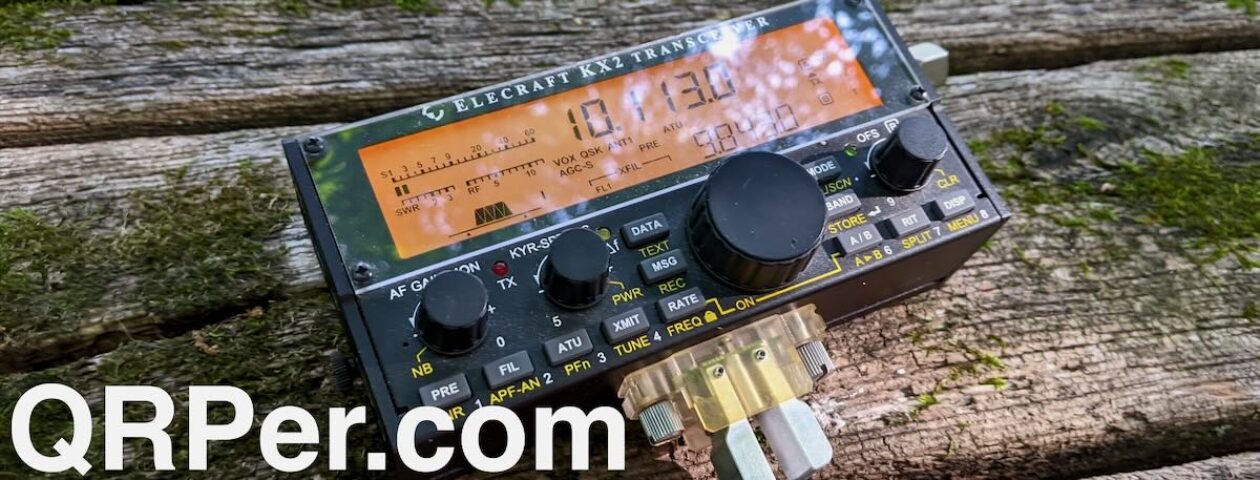 Many thanks to Charles (KW6G) who shares the following guest post:
Many thanks to Charles (KW6G) who shares the following guest post:
Product Review: Chelegance MC-750 Portable Ground Plane Antenna, Part 1
by Charles Ahlgren, KW6G
I recently purchased a Chelegance MC-750 portable ground plane antenna from DX Engineering. Essentially, the antenna system provides a ¼ wave portable vertical antenna with 4 counterpoise wires that operates on 20 through 10 meters. The antenna will also operate on 40 meters with the provided loading coil. The manual states the antenna will support 6 meter operation, but no instructions are provided on how to do so. 30 meter operation is not supported. It appears from our initial testing that no ATU is required.
Here are some of my thoughts on the antenna.
Product Description
The MC-750 comes with the following components:
- GROUND ROD / ANT BASE
- 50 CM ANT ARM
- 5.2 M WHIP
- 7 MHZ COIL
- 4 COUNTERPOISE WIRES (radials)
- COUNTERPOISE WIRE COLLECTOR BOARD
- CARRY BAG
As provided, it is designed to operate on the 40, 20, 17, 15, 12, and 10 meter bands without any modifications. Six meters is also supported per the manufacturers manual, but no guidance on how to do that is offered in that document. However, finding the proper length of radiator for 6 meters should be straightforward using a tape measure to set the proper whip length.
[Update: Chelegance notes that to operate 6 meters, simply extend the last segment only of the whip (see photo) and for 30 meters extend the last four segments of the whip and 15cm on the 5th segment (see photo).]
I checked the ground rod / antenna base with a magnet and confirmed it is made from stainless steel as both components are not magnetic; a characteristic of stainless. Both the ground rod/ antenna base and the 50 cm antenna arm (which was also non-magnetic) had a hefty feel (together, they weigh about 2 pounds), therefore I think it safe to assume that these components are made of stainless steel. Since most ops will undoubtedly use the antenna arm as an aid to inserting / extracting the ground rod into / from the ground, it seems a prudent decision by the manufacturer to have this piece fabricated from a strong, stiff material such as steel. The machine work used to fabricate these parts appears to be quite good – the fit and feel were excellent, with no sharp or ragged edges to cause problems in the field.
I measured the whip while set at the various position marks for 20 through 10 meters. The band markings on the whip were accurate – giving a 1/4 wavelength radiator when combined with the 50 CM ant arm length…On 40 meters, the whip and rod measured about 1/8 wavelength. The required the loading coil needs to be inserted between the whip and the rod (at approximately 1/10 the total 40 meter whip height above the base). If you want to operate this antenna on 30 meters, it appears that you need to provide an extra 1.4 meter of additional rod as a quarter wavelength ground plane at 10.1 MHz requires a 7.1 meter radiator. Six meter operation would require a whip of around 4.7 feet. With the whip fully collapsed, the length of the rod and antenna arm measures 40-1/4”. Therefore, if 6 meter operation is contemplated, extending the whip about 16 inches from fully collapsed should suffice. However, I don’t think that an antenna configuration such as that would be a very good performer unless it were elevated from ground level; or maybe it would be good for a SOTA activation? Continue reading Guest Post: Reviewing the Chelegance MC-750 (Part 1) →
 Table Rock Fish Hatchery isn’t open on Saturdays, but that really isn’t a problem because the picnic area where I set up shop is open 24/7.
Table Rock Fish Hatchery isn’t open on Saturdays, but that really isn’t a problem because the picnic area where I set up shop is open 24/7.



























